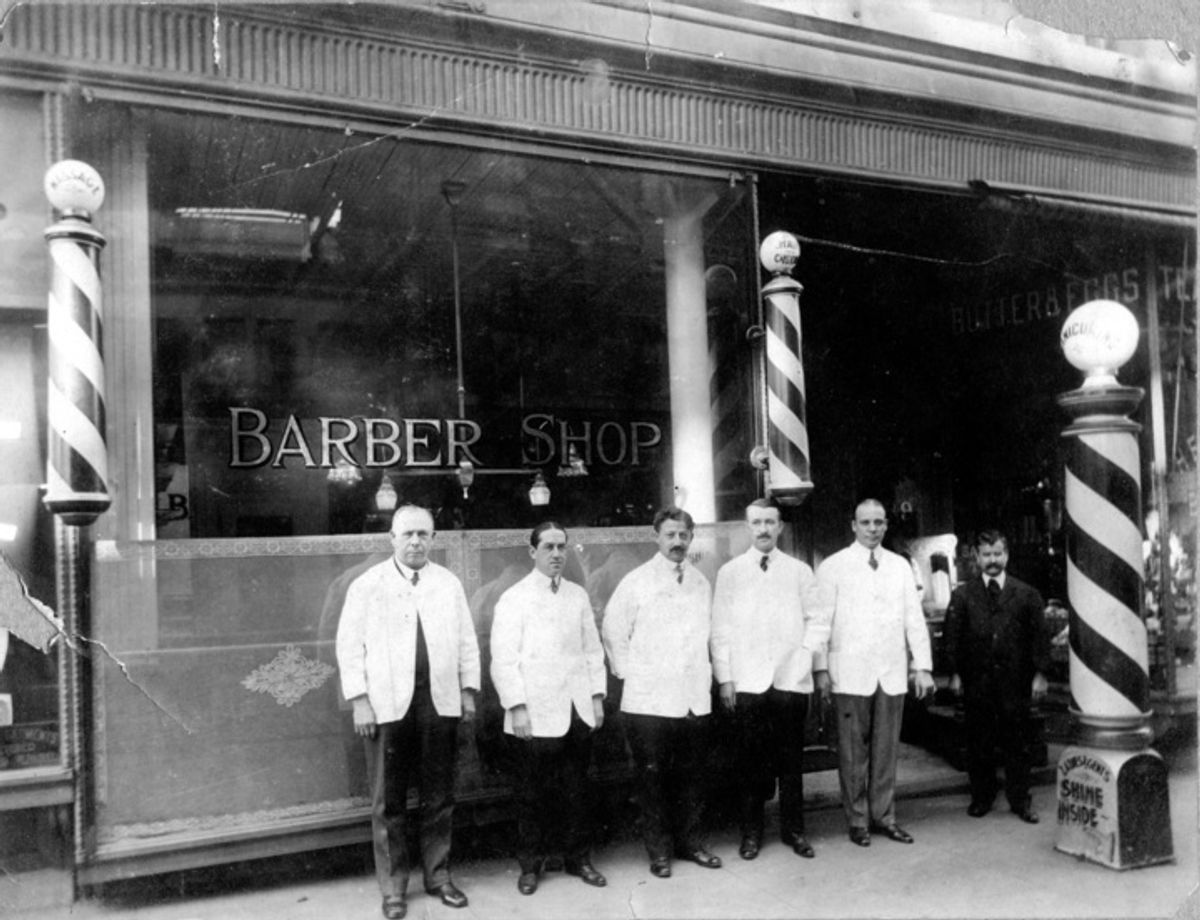Barbers have not always been tasked only with haircuts and beard-trims; in fact, being a barber during the Middle Ages – and in some regions, all the way through the 19th century – meant being prepared to perform minor surgeries and other medical procedures as well. The red, white and (sometimes) blue stripes on barber poles reflect that history.
As early as A.D. 1000, barber-surgeons' work began appearing in monasteries, according to the Encyclopedia of Medical History. Aside from monks being required to keep a clean-shaven head, they were also typically required to regularly undergo bloodletting, making the barber-surgeon's services indispensable to the monastery.
Bloodletting, a practice involving cutting open a vein typically in the elbow or knee in order to rid the body of "impure" fluids, likely originated in prehistoric times. It was believed to be the most versatile cure for the sick and the best way to promote "vigor" in the healthy.
In Europe during the Middle Ages, physicians were seen as academics "contemptuous of surgery," a practice far beneath their social station, leading to tasks such as bloodletting, teeth-pulling, and amputations most often being placed on barber-surgeons. Interestingly, this is why surgeons in the U.K. are still referred to as Mr./Mrs./Ms. as opposed to Dr., according to the Journal of Lancaster General Hospital.
By the 13th century, barber-surgeons began to gain recognition and status as professionals and by the 14th century, a guild had been formed Paris. From 1301 to 1743, the number of known barber-surgeons had grown from 29 to 300.
Only two years later in 1745, the United Barber Surgeon Company in London (founded in 1540) dissolved as university-educated surgeons quickly garnered social status not enjoyed by barbers. By the 19th century, barbers' importance in the medical community had faded almost entirely.
"Only the barber's pole remained as a reminder of what the barber had once been," reads the Encyclopedia of Medical History.
The barber's pole is traditionally white, with red and sometimes blue stripes twisted around it, and there are multiple interpretations as to what these colors symbolize.
According to "The World of Rembrandt, 1606-1669" by Robert Wallace, barbers in 17th century Amsterdam used a color code to advertise what services they offered. According to the Wallace, "the red indicated that the surgeon was prepared to bleed his patients, the white that he would pull teeth or set bones, and the blue that he would, if there was nothing more serious to be done, give the customer a shave."
Other historians, however, claim that the addition of blue is most common in the U.S. for patriotic reasons, and that the red stripes represent blood dripping down the pole that customers would grip to make the veins stand out, or alternatively, that the blue represents veins and the white represents bandages.
Regardless of the multiple interpretations made over the years regarding the specific meaning of the colors of the barber pole, we can confirm that it originated from the practice of bloodletting performed by barbers.
